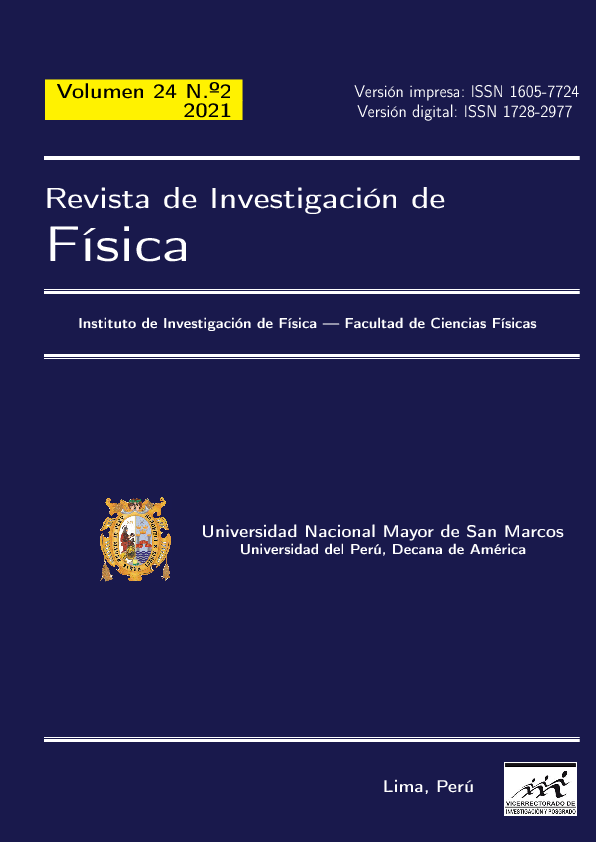Spectral analysis of essential vacuum kinematics
DOI:
https://doi.org/10.15381/rif.v24i2.20449Keywords:
Underlying void of a system, resonance vector quantum, resonance radius, spectral distribution of vector quantaAbstract
A Fourier analysis of the parametric equations that describe the essential kinematics of the underlying vacuum of natural systems is performed, assuming that the organized information received by the system for its intelligent operation would be executed in said vacuum. The vector quanta model is used to describe the information transmission mechanism through the propagation of light from an emitter, which would be found in a higher spatial dimension, to the receiver, that is, the self-organizing system. Considering the concept of resonance, the analysis reveals that every self-organized system would have a resonance radius which reaches a maximum value when the magnitude of the vector quantum associated with the information carried by light coincides with the magnitude of the vector quantum characteristic of the system. The specular symmetry presented by the resonance radius equation would mean that for each vector quantum associated with the underlying real vacuum of a system there is another opposite vector quantum associated with the underlying virtual vacuum of the system. In conditions of quasi-equilibrium of the system, these vector quanta would not be exactly opposite, so small fluctuations are attributed to them compatible with the vibration frequencies that are detected in all natural systems. Taking into account the criterion of small fluctuations, it would be possible to carry out, under resonance conditions, a well-defined measurement of the vector quantum of resonance of a system, provided that the fluctuations of the vector quantum associated with the light or radiation vortex used are close to the system-specific fluctuations. Finally, an equation is obtained that describes the dispersion of the vector quanta in the underlying vacuum of a system. This equation indicates that in said vacuum the spectral distribution of the vector quanta varies inversely proportional to the square of the magnitude of each one of them. Furthermore, the spectral distribution can be simulated by numerical series compatible with patterns existing in nature.
Downloads
Published
Issue
Section
License
Copyright (c) 2021 Oscar Santiago Monroy Cárdenas, Marco Antonio Merma Jara

This work is licensed under a Creative Commons Attribution 4.0 International License.
THE AUTHORS RETAIN THEIR RIGHTS:
a. The authors retain their trademark and patent rights, as well as any process or procedure described in the article.
b. The authors retain the right to share, copy, distribute, perform and publicly communicate the article published in the Revista de Investigación de Física (for example, place it in an institutional repository or publish it in a book), with an acknowledgment of its initial publication in the Revista de Investigación de Física.
c. The authors retain the right to make a subsequent publication of their work, to use the article or any part of it (for example: a compilation of their works, notes for conferences, thesis, or for a book), provided that they indicate the source. of publication (authors of the work, journal, volume, number and date).






